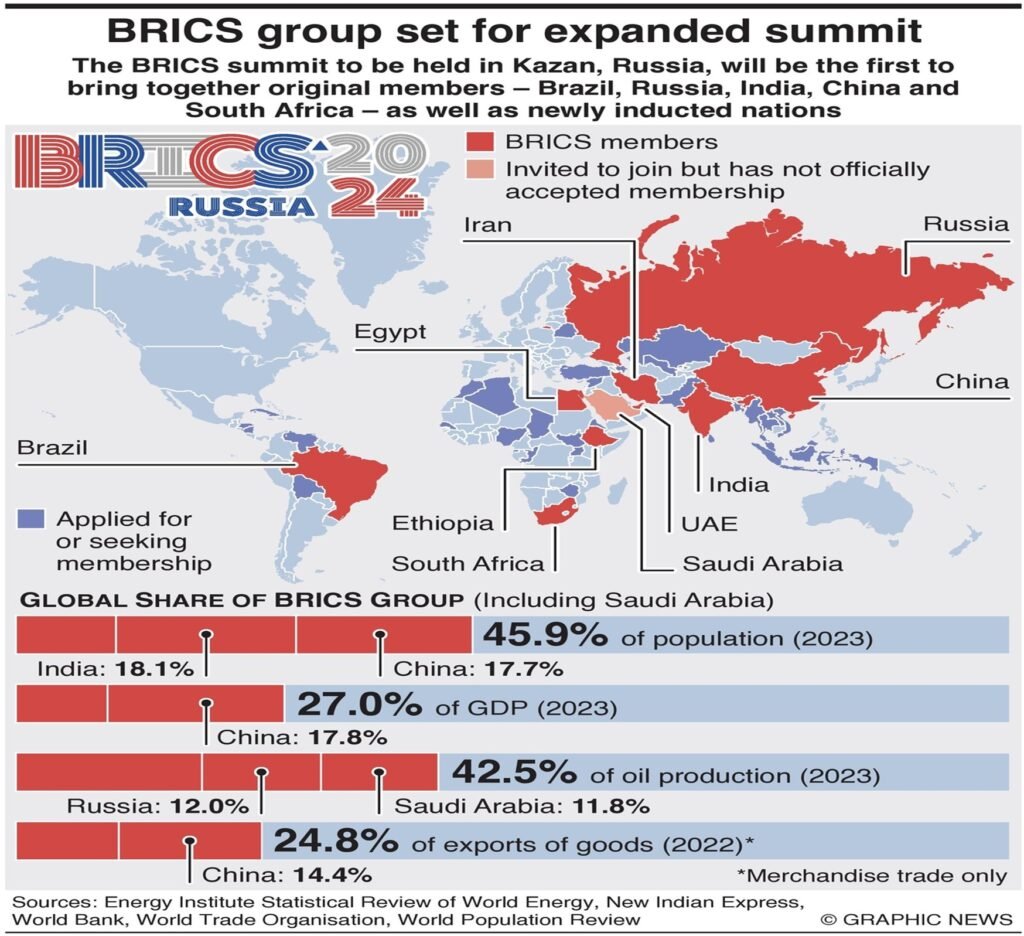- The 16th BRICS Summit in Kazan, hosted by Russia, underscored the theme of “strengthening multilateralism for just global development and security.”
- This summit marked the first meeting of the expanded BRICS+ at the summit level. Priority at Kazan was on strengthening intra-BRICS economic engagement and enhancing ties with the Global South.
| BRICS Evolution and Global Context: After Jim O’Neill’s hypothesis, originated from a 2006 meeting, BRICS began as an economic partnership among emerging economies. BRICS has grown to include South Africa and, recently, five new members (Egypt, Ethiopia, Iran, Saudi Arabia, and United Arab Emirates (UAE)), reflecting a broader development and reform agenda. It seeks to engage with both the Global South and developed nations, promoting partnerships rather than alliances, economic cooperation remains central. Established new financial instruments, such as the Contingency Reserve Arrangement and New Development Bank. |
- BRICS advocates for reforms in global institutions, including the UN, IMF, and World Bank. The Kazan Declaration reiterated BRICS+ support for UNSC reform, though specific steps and country references remain unresolved.
- There was consensus on combating terrorism and its financing, highlighting the need for closer coordination.
- BRICS operates on consensus, without a formal secretariat, with decisions shaped by the presidency and member participation.
- Recent expansions have included Egypt, Ethiopia, UAE, Iran, and Saudi Arabia, enriching the group’s agenda and extending its regional influence.
- The admission guidelines for new partner countries were refined, stressing the importance of alignment with BRICS’ ethos and cooperative framework.
| Indo-China Bilateral India and China agreed to resolve the military stand-off at the Line of Actual Control (LAC) and restore normalcy in their bilateral relations. First formal meeting between the leaders of both nations in five years. The process to bring India-China relations back to normal has been initiated. Dialogue mechanisms between foreign ministers and other officials will be restarted. Special representatives from both sides will meet at an early date to address the border dispute. No external party was directly involved in resolution process of Border Agreement. |
| India’s Position on Financial Integration Local Currencies: India supports strengthening financial integration within BRICS through trade in local currencies and efficient cross-border payments viewing it as a strategic move away from the U.S. dollar. UPI: The Unified Payments Interface (UPI), developed by India, is highlighted as a successful model now adopted by several countries, promoting independent financial systems. Banking: The group encourages the strengthening of correspondent banking networks within BRICS. BCBPI: BRICS Cross-Border Payments Initiative (BCBPI) for local currency settlements, which is voluntary and non-binding. |

Dig Deeper: Compare BRICS with SCO.

